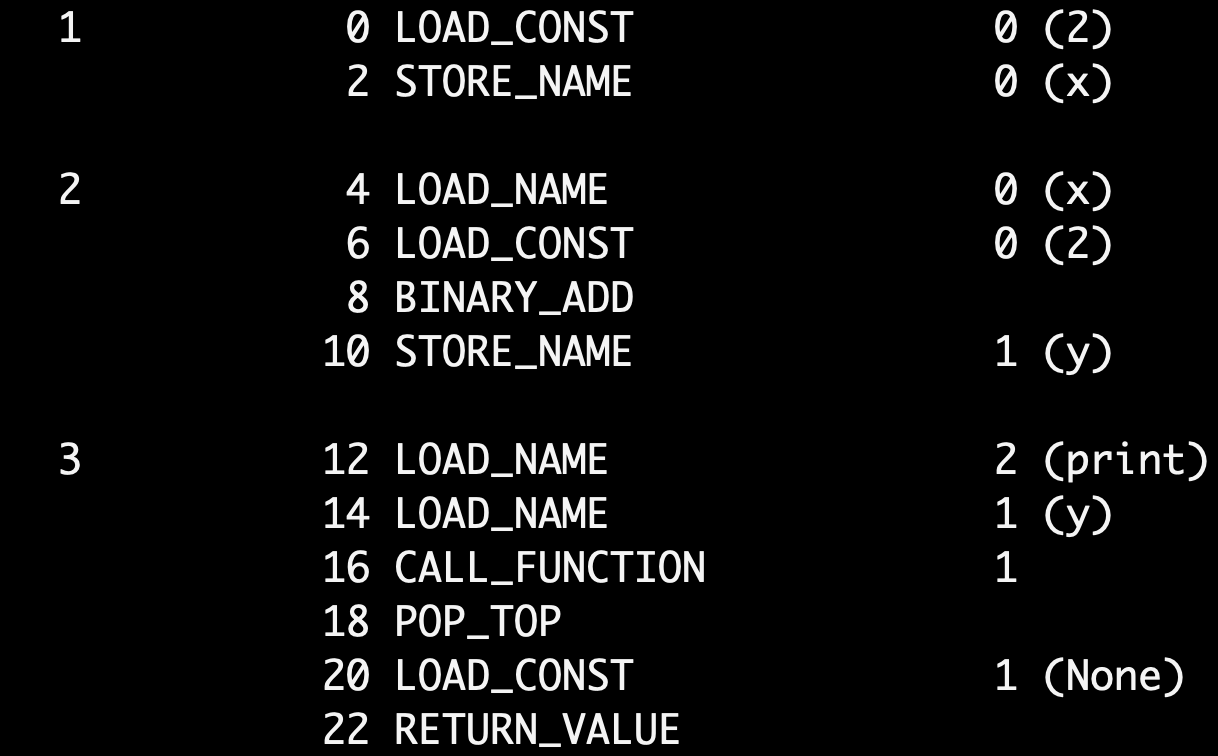Bytecode¶
Bytecode definition: https://docs.python.org/3/library/dis.html
stack based
dis module: https://docs.python.org/3/library/dis.html
dis module could show us the disassembling bytecode from Python code, and the bytecode will map to the opcode.h
You can write some code like below:
x = 1+1
y = x+2
print(y)
save it to test.py and then back to the command line
typing python3 -m dis test.py

pyc¶
pyc is sort of bytecode that putting on disk,and a sequence of instructions for machine to run.
When Python program runs, the bytecode is temporarily stored
in the PyCodeObject in the memory. Once the Python
program ends, the Python interpreter writes the PyCodeObject
to the .pyc file.
We can also execute directly through pyc file: python xxx.pyc
When the Python program is executed for the second time, it will first look for the .pyc file in the current directory. If it is found, it will be loaded directly. If it is not found, repeat the above process.
If Python finds that Python’s source code has been modified, it will check the timestamp. In short, it is to determine the update time of the two files before deciding whether to compile or load directly.
marshal.c : Write Python objects to files and read them back
Each data type is mapping to a function to write them into pyc file like w_string, w_object.
When these python data types are written to the pyc file, all data structures will
disappear, so you must rely on such as function W_TYPE (TYPE_LIST, p); to write the
type into file to recover.
In any case, there are only two forms for making pyc file, one for numeric and one for string.
A python source file will eventually become a PyCodeObject, and the inside classes or functions will be compiled to a code block, which will also be compiled into a PyCodeObject and stored in the first PyCodeObject->co_const.